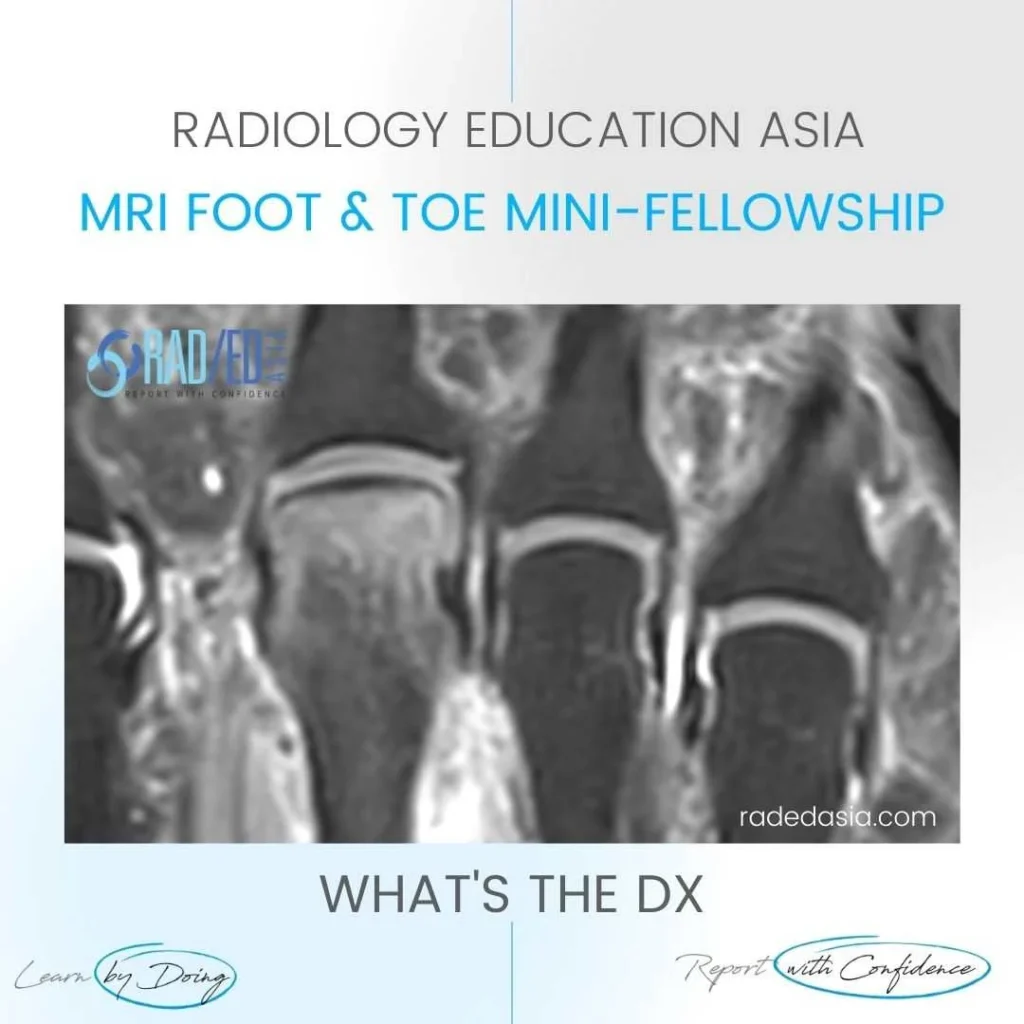
FREIBERG DISEASE SUBCHONDRAL FRACTURE INFRACTION OSTEOCHONDROSIS (VIDEO)
FREIBERG DISEASE / SUBCHONDRAL FRACTURE INFRACTION / OSTEOCHONDROSIS
- Extensive oedema in the head of the 2nd metatarsal with slight flattening of the cortical margin is characteristic of what's called Freiberg's Disease in adolescents and Subchondral Fracture in adults.
- Freiberg disease occurs in adolescents with an unfused epiphysis.
- However, the same pathology occurs in adults and is called a subchondral fracture or infraction.
- An Infraction is a non displaced incomplete fracture that results in necrosis of the subchondral bone.
- Frieberg's disease or Infraction most commonly occurs in the 2nd Metatarsal Head.
- Can also occur, but is less common, in the 3rd and 4th metatarsal heads.

- Diffuse bone marrow oedema in the head of the 2nd metatarsal (Pink arrow) with,
- Slight flattening of the 2nd metatarsal head cortical margin (Blue arrow).

If your Browser is blocking the video, Please view it on our YouTube Channel HERE
Freiberg's Disease occurs in adolescents with an unfused epiphysis.
Subchondral Fracture is the same pathology that occurs in adults, and is characterized by a non displaced incomplete fracture that results in necrosis of the subchondral bone.

The 2nd Metatarsal Head is the most commonly affected metatarsal head in Freiberg's Disease.

Yes, Freiberg's Disease or Infraction can also occur, but is less common, in the 3rd and 4th metatarsal heads.

If left untreated, Freiberg's Disease or Infraction can lead to degenerative arthritis and chronic pain.

Learn more about this condition & How best to report it in more detail in
our Online Guided ANKLE MRI or FOOT & TOE MRI Mini Fellowship.
More by clicking on the images below.
For all our other current MSK MRI & Spine MRI
Online Guided Mini Fellowships.
Click on the image below for more information.
- Join our WhatsApp Group for regular educational posts. Message “JOIN GROUP” to +6594882623 (your name and number remain private and cannot be seen by others).
- Get our weekly email with all our educational posts: https://bit.ly/whathappendthisweek













